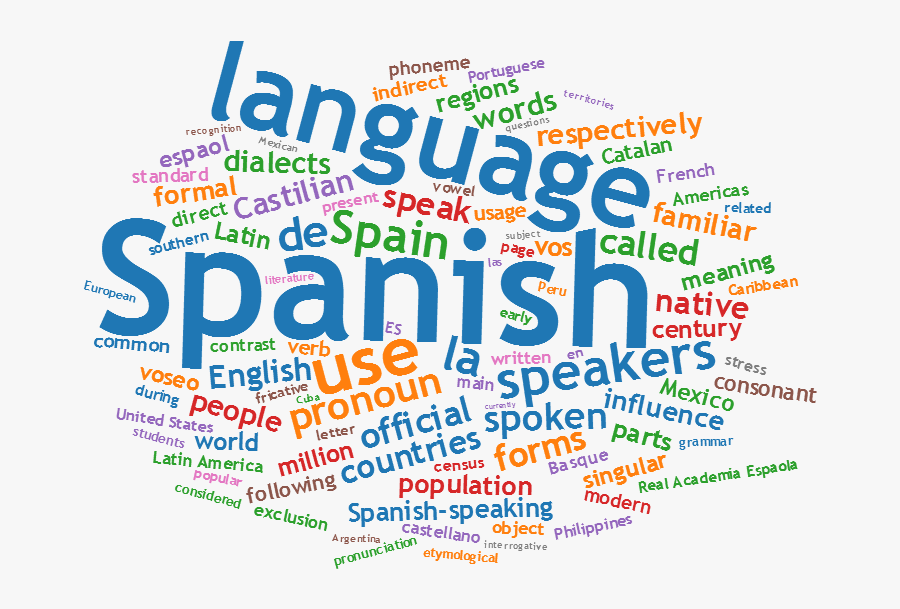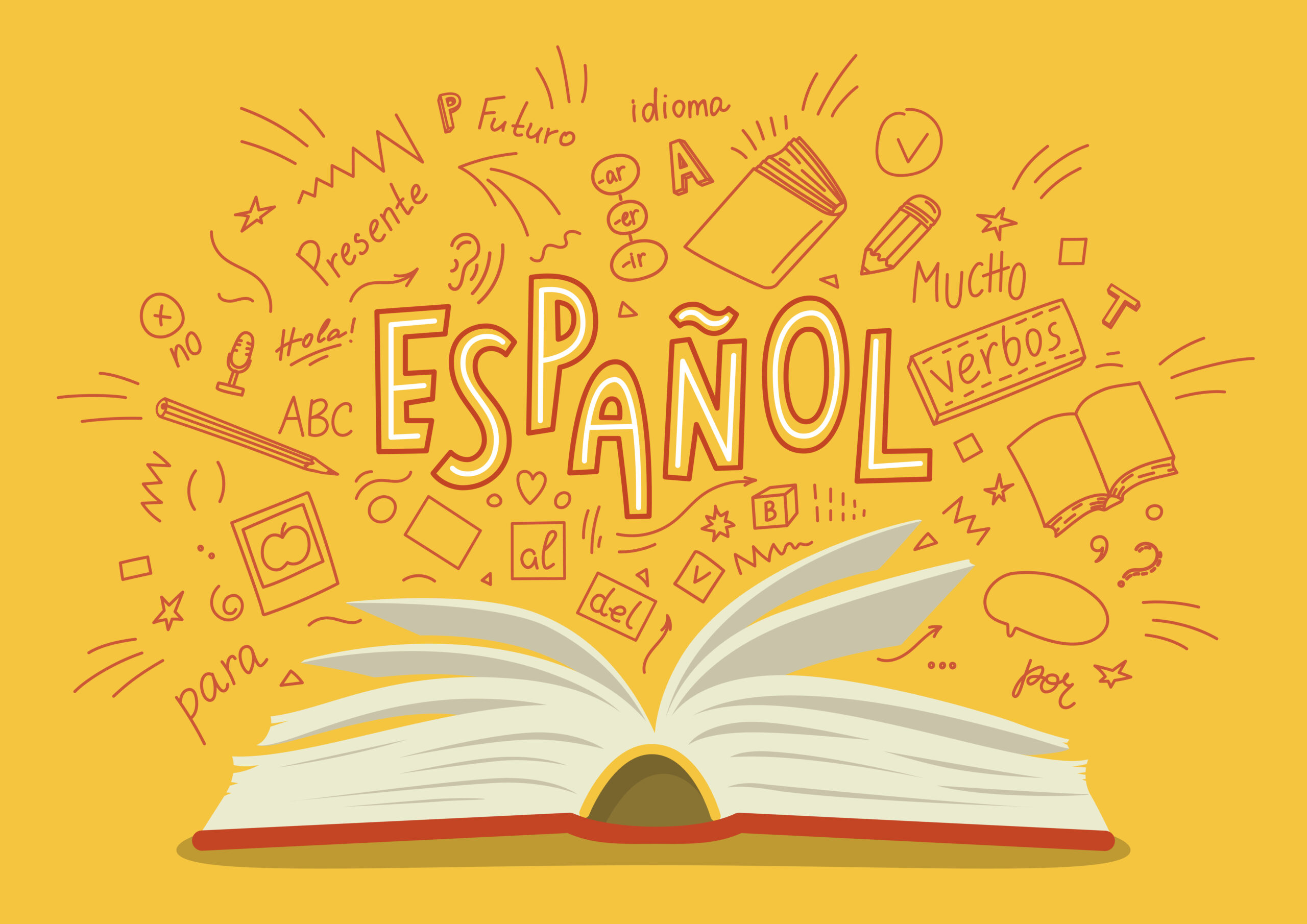Where did the Spanish language Originate?

From Origin to Romance: The Spanish Language’s History
Spanish is a poetic and lovely language. It’s pleasant on the tongue for those who utter it and melody to the ears of those who listen to it.
Have you ever wondered where, precisely, Spanish comes from? How much has Spanish changed over time? How different is the Spanish we hear and speak now from the Spanish spoken at various times throughout history?
It turns out that the Spanish language has undergone a long and spectacular journey. With its profound roots, this Romance language has expanded far and wide from its origins. Thousands of years of language evolution and cultural impact have resulted in the Spanish we know and love today.
It’s an intriguing tale. Let’s begin on a mission to discover the origins of the Spanish language and how it evolved to its current state!
Just the Facts about the Spanish Language Today
● Millions of people speak Spanish around the world.
The Romance language Spanish is the most widely spoken. Portuguese, French, Italian, Romanian, and Catalan are some of the other Romance languages. They’re all related to the Indo-European language family, which we’ll discuss in a minute.
This language is extensively spoken worldwide, even in nations where the official language is not Spanish. The United States is a perfect illustration of a country where Spanish is widely spoken even though it is not authorized.
Three hundred thirty million individuals in 21 countries speak Spanish as their first language. In international communication, it is regarded as the second world language, while in politics, economics, and culture, it is considered the third world language. Thus, a “world language” is widely studied as a second language and widely spoken worldwide. That’s a significant achievement!
● The Spanish Language’s Various Branches
Castilian Spanish, commonly known as Castellano, is the most widely spoken language in Spain. There are a few differences in pronunciation from Latin American Spanish. There are some word distinctions as well. In Spain, for example, you’d drive a coche (car), whereas elsewhere you’d use a carro (a vehicle). In addition, rather than ustedes (you), which is used in other Spanish-speaking nations, vosotros (you) is used.
● Latin American Spanish is spoken in the Americas.
However, keep in mind that there are regional distinctions in Spanish depending on where you are in Latin America. Dialects, idioms, and slangy words make listening to and speaking in any setting an entertaining language!
Now that you have the necessary info about the Spanish language let’s look at it.
The Journey Begins Near the Black Sea, From Proto-Indo-European to Latin
Author Ralph Penny traces the Spanish language back to Indo-European languages in his widely read book “A History of the Spanish Language,” but it could go even further.
Historians and linguists think that until circa 3,400 BCE, a family of languages known as the Proto-Indo-European languages was spoken, which gave birth to the creation of the languages we know today. Unfortunately, we don’t know much about these languages because they never developed a writing system (or even if they existed). But we do know that they eventually evolved into Indo-European languages, about which we see a lot more.
The Indo-European languages were initially spoken 5,000 years ago in the Black Sea region, now Turkey.
The Indo-European Languages: Tracing their Origins to the Black Sea Region
Introduction: The Indo-European languages form the largest language family in the world, with more than 3 billion speakers across various continents. These languages have a rich history that dates back thousands of years. According to linguistic and archaeological evidence, the Indo-European languages were initially spoken around 5,000 years ago in the Black Sea region, which is now part of modern-day Turkey. In this article, we will explore the origins of the Indo-European languages in the Black Sea region and their subsequent spread across different parts of the world.
- The Proto-Indo-European Language: The Indo-European languages share a common ancestor known as the Proto-Indo-European (PIE) language. Linguists have reconstructed PIE based on similarities observed among the different branches of the Indo-European language family. PIE is believed to have been spoken during the 4th millennium BCE in the Black Sea region, which encompasses present-day Turkey and the surrounding areas.
- The Homeland Hypothesis: The Homeland Hypothesis suggests that the Black Sea region was the original homeland of the Indo-European speakers. This hypothesis is supported by linguistic, archaeological, and genetic evidence. Linguistic similarities among the Indo-European languages provide clues about the ancestral homeland, while archaeological findings and genetic studies provide insights into the movements and migrations of early Indo-European populations.
- The Anatolian Branch: One of the earliest branches of the Indo-European languages is the Anatolian branch, which includes ancient Anatolian languages such as Hittite, Luwian, and Palaic. These languages were spoken in Anatolia, the region that corresponds to present-day Turkey. The Anatolian languages offer valuable insights into the early stages of the Indo-European language family and their presence in the Black Sea region.
- The Spread of Indo-European Languages: From their original homeland in the Black Sea region, the Indo-European languages gradually spread across different parts of the world through migration, conquest, and cultural exchange. Several major language branches emerged, including the Italic, Celtic, Germanic, Balto-Slavic, and Indo-Iranian branches. Each branch developed its own distinct languages, dialects, and linguistic features, adapting to the local cultures and environments of the regions where they spread.
- Language Shifts and Influences: The spread of Indo-European languages also led to language shifts and linguistic influences. As Indo-European-speaking populations migrated and interacted with local populations, languages of different families were influenced by Indo-European languages. This resulted in language contact, borrowing of vocabulary, and the adoption of grammatical features. For example, Latin, as an Italic language, influenced the development of Romance languages, which include French, Spanish, Italian, Portuguese, and Romanian.
- Global Significance: The Indo-European languages have significant global significance due to their wide geographic distribution and the large number of speakers. They are spoken in Europe, North and South America, parts of Asia, and Oceania. Many Indo-European languages, such as English, Spanish, Hindi, Russian, and German, are considered global languages, serving as mediums of communication, business, science, and cultural exchange on an international scale.
- Linguistic Diversity and Preservation: The Indo-European language family is incredibly diverse, comprising numerous languages with distinct characteristics, grammatical structures, and phonetic systems. This diversity is evident in the wide range of languages spoken within the Indo-European branches. Efforts are being made to preserve and document endangered Indo-European languages to ensure their survival and cultural heritage.
-
2 / 2
The Indo-European Languages: Tracing Their Origins in the Black Sea Region
Introduction: The Indo-European languages form one of the largest language families in the world, with over 400 languages and dialects spoken across Europe, Asia, and parts of the Americas. These languages share a common linguistic ancestry, and their origins can be traced back to the Black Sea region, which is now part of modern-day Turkey. In this article, we will explore the fascinating history of the Indo-European languages and their initial emergence in the Black Sea region approximately 5,000 years ago.
- Linguistic Family and Classification: The Indo-European language family encompasses a wide range of languages, including English, Spanish, Hindi, Russian, Persian, and many others. These languages are classified into several branches, including the Germanic, Romance, Celtic, Slavic, Indo-Iranian, and Balto-Slavic branches, among others. The similarities in vocabulary, grammar, and syntax among these languages indicate their common origin and the existence of a shared ancestral language.
- The Indo-European Homeland: The search for the homeland of the Indo-European languages has been a topic of intense study and debate among linguists and archaeologists. In the 19th century, linguist Sir William Jones noticed similarities between Sanskrit, an ancient language of India, and Greek and Latin, leading to the proposal of a common ancestral language. Scholars later hypothesized that this ancestral language was spoken in a specific geographical region known as the Indo-European homeland.
- The Black Sea Region: The Black Sea region, situated around the southeastern coast of the Black Sea, is considered by many linguists as the most likely location for the Indo-European homeland. This region encompasses present-day Turkey, along with parts of Georgia, Armenia, and Iran. Linguistic evidence, such as shared vocabulary and grammatical features, points to the Black Sea region as the geographical area where the ancestors of Indo-European speakers resided.
- The Anatolian Hypothesis: The Anatolian hypothesis, proposed by linguist Colin Renfrew in the 1980s, suggests that the Indo-European homeland was located primarily in Anatolia, which is the Asian part of modern-day Turkey. According to this hypothesis, the speakers of the ancestral Indo-European language migrated from Anatolia to different parts of Europe and Asia, spreading their language and culture as they moved.
- Archaeological Evidence: Archaeological evidence also supports the idea of an Indo-European homeland in the Black Sea region. The discovery of ancient sites, such as Troy, Hattusa, and Çatalhöyük, in present-day Turkey, provides insights into the cultures and civilizations that flourished in the region during the Neolithic and Bronze Ages. These archaeological findings help researchers reconstruct the lifestyles and migrations of the ancient Indo-European speakers.
- The Pontic-Caspian Steppe: Another proposed location for the Indo-European homeland is the Pontic-Caspian steppe, an expansive grassland region extending from the northern shores of the Black Sea to the Ural Mountains. This region was home to several ancient nomadic cultures, including the Yamnaya and the Sintashta-Petrovka cultures, which are believed to have played a significant role in the spread of the Indo-European languages.
- Language Diffusion and Diversification: From their homeland in the Black Sea region, the Indo-European speakers gradually migrated and spread their language to different parts of Europe, Asia, and beyond. This diffusion and subsequent diversification of the Indo-European languages resulted in the formation of numerous branches and sub-branches. Over time, the original ancestral language evolved into distinct languages, influenced by the cultures, environments, and interactions with other languages.
- Linguistic Legacy: The Indo-European languages have left an indelible mark on the world’s linguistic and cultural landscape. They have shaped literature, art, philosophy, and science across continents and have been instrumental in the development of human civilization. The Indo-European language family continues to evolve, with new dialects and languages emerging while older ones face extinction.
Conclusion: The Indo-European languages, with their diverse branches and rich linguistic heritage, originated approximately 5,000 years ago in the Black Sea region, which is now part of modern-day Turkey. Linguistic and archaeological evidence strongly supports the idea that this region served as the homeland of the Indo-European speakers. The migrations and diffusion of these languages have had a profound impact on human history and culture, shaping the way we communicate and understand the world around us. The Indo-European language family stands as a testament to the shared origins and interconnectedness of human languages, reminding us of our common linguistic heritage.
As people migrated about, their languages expanded over Europe and Asia. Anatolian, Indo-Iranian, Greek, Italic, Celtic, Germanic, Armenian, Tocharian, Balto-Slavic, and Albanian are some of the languages that have evolved. If you’re interested in learning more, linguist Mark Damen gives a fascinating TEDx talk about one element of this progression across time.
But we’re only interested in the Italic branch of Indo-European languages since it’s from there that we acquired Latin, the old Roman language.Spanish language
What about the language? It is, after all, Latin!

The Travelers Reach the Iberian Peninsula: From Latin and Arabic to Castilian

The Black Sea is roughly 2,000 kilometers away from the Iberian Peninsula, which contains Spain and Portugal. However, despite the distance, the Roman Empire spread its influence far and wide, impacting the area’s cultural and linguistic development.Spanish language
Dialects began to emerge within the spoken language when the many languages in the area mixed. The Castilian dialect developed in northern Spain at the end of the 11th century. It is where we can observe the origins of modern Spanish being spoken for the first time!
When the kingdoms of Castile, Leon, and Aragon came together in the late 15th century to establish the beginnings of Spain, what began as a local vernacular spread and gained a stronghold. Castilian, which had also found a writing system, became the province’s official language in 1492.Spanish languageSpanish language
Castilian Spanish is still the official language of that magnificent country, Spain! The Moors from Northern Africa and the Visigoths from Central Europe both captured areas of Spain. Then, throughout time, it was progressively regained by Christians who spoke Vulgar Latin. The Latin language was the official language of the Peninsula during the Roman Empire. However, it has ties to the native vernacular of the inhabitants, such as Celts and Iberians, and people began to notice its distinct flavor.Spanish languageSpanish language
Present Situation
Spanish, like Portuguese, French, and Italian, belongs to the Roman language family. In the early ninth century, the Castilian dialects that evolved in Cantabria (North-Central Spain) in the early ninth century gave rise to the Spanish we know and speak today. The Iberian Peninsula is now modern-day Spain, and Castilian has become the country’s official language. So when someone hears Spanish, the first thing that comes to mind is a language spoken in Spain. But there’s a lot more to this language, and it’s said in several other nations. Spanish languageSpanish language
Spanish explorers transported this vernacular to new countries across the Atlantic to the Americas in the 17th century. It spread fast over the Americas. As a result, persons from Latin America with complete Spanish blood are still considered ‘white.’ Brazil currently accounts for less than half of South America’s population. However, it is predicted that by 2050, most people in South America will be Brazilians who use Portuguese as their first language rather than Spanish. All native Spanish speakers in Latin America speak the same dialect, Castellan.

It is now the world’s second most widely spoken language. There are about 578 million Spanish speakers in the globe now, accounting for 7.6% of the worldwide population. In addition, over 45 million people in the United States speak Spanish as a second language or as a native language. As a result, it has a tremendous cultural impact all over the world. Spanish is the official language of more than 20 countries in the twenty-first century. Spain, Argentina, Chile, Bolivia, Colombia, Costa Rica, Cuba, and several other countries. All of these countries are popular tourist destinations. Also, if you’re a traveler, make sure you brush up on your Spanish skills. Spanish language
To Read more article, just click on: https://24x7offshoring.com/blog/